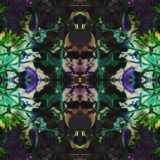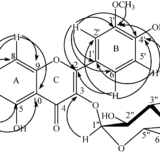The Botanical Range of Hallucinogenic and Euphoric Plants
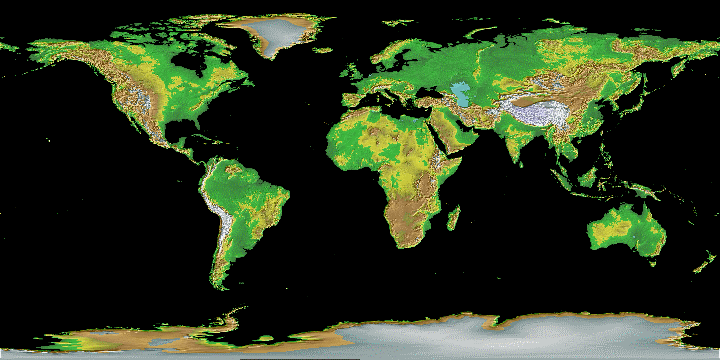
How Many Hallucinogenic Plants Are There?
There are far more hallucinogenic plants in existence than humans have discovered or put to use. Of the more than half-million of species of flora and foliage, roughly only a thousand are known or used for their hallucinogenic, euphoric or other psychoactive properties. Truthfully it is simply because it can be hard to identify a chemical that provides hallucinogenic properties in higher doses, when it is only consumed and found in very small trace elements in the plant.
Additionally, man has become so accustom to relying upon well-known vegetation for nutrition and survival purposes, that it is easier to consume what is available than to try new things. That makes sense, as the variety of foods and ingredients already available and used in the human diet is so large, it is possible to consume only known-foods and substances throughout one’s entire life, and still feel as though a decision is being made every day for each meal. Speaking in the sense of botanicals being used as medicines, for religious or ceremonial purposes…or even just recreationally…even marijuana (one of the most commonly used and enjoyed drug on the planet) is considered “walking on the wild side.” Obviously it is much harder for one to explore the psychoactive, hallucinogenic, euphoric or otherwise spiritual properties of botanicals which seem questionable…so the less-known and less-used a substance is, the less likely a new user will partake in enjoying it (or trying it depending upon the trip that results).
Although there are a lot of drugs out there yet to be discovered, the ones which are well-employed and in use around the world, have generally been used for hundreds, if not thousands of years. In fact, very few areas around the world lack in a prominent hallucinogen of cultural significance to the tribe, culture or area. Surprisingly due to its size and strong ceremonial-based cultures, Africa seems to have the least amount of hallucinogenic plants native to the area. In terms of hallucinogens, Africa is most known for its Iboga root which contains the hallucinogenic substance Ibogaine. Ibogiane is a psychedelic and a dissociative. A tribe called the Bwiti in the Congo will slice the bulb of Kwashi and apply it to gentle lacerations on the scalp and body, allowing the juice to enter the bloodstream. Africa also harbors the Kanna drug, donned a mysterious hallucinogen, though many people do not take enough, a strong enough strain or administer it correctly and thus it has a mixed history. The Thorn Apple and Henbane are also well-used in Africa.
Europe and Asia (Eurasia) has a lot of hallucinogens which have been employed for hundreds, sometimes thousands of years. The most popular being Hemp, also popularly known as Marijuana, and less popularly known as Charas, Daggha, Ganja, Maconha, and other terms. However, Marijuana has reached a world-popularity in modern times and is enjoyed globally. Eurasia also harbors the Fly Agaric mushrooms, first prominently enjoyed by tribes in Siberia and ancient India. Asia particularly employed heavy use of Datura, especially in Papua New Guinea. Papua is no stranger to consuming large amounts of hallucinogens. New Guineans enjoy the rhizomes (subterranean stems including roots) of Maraba, which are eaten for their hallucinogenic properties; and they also enjoy mixtures of Ereriba leaves and Agara bark which induce hallucinations and dream-like visions (probably because Agara contains high quantities of DMT – a very strong hallucinogen naturally occurring in a large amount of botanicals and animals around the world). While it may not be employed today, Nutmeg has been used for its narcotic-like effects in ancient India and Indonesia. Turkestan tribes enjoy Lagochilus for its intoxicating effects. Europe’s ancient times seem to dominantly employ hallucinogens in witchcraft and divination only. Most of the plants which contributed to this era of “plant magic” were members of the Nightshade family. Some of these plants included Henbane, Mandrake, Thorn Apple, and of course, Belladonna.
Kava-kava, or Piper methysticum, is native to the western Pacific and is in such widespread use in some tropical regions of the world that there are actual “Kava Bars” which have entirely replaced alcohol. Although Kava is not a hallucinogen, it is a euphoric and hypnotic narcotic. In the West Indies, indigenous peoples used Cohoba as a snuff. Although the southern region of North America (upwards of Mexico) is rather lacking in hallucinogens, some species of Datura have been used, as well as the Red Bean and Mescal Bean; these plants, having vision-inducing properties, were most popular with Indian cultures in the region. Northern North America, including largely Canada, harbored Sweet Flag, a plant who’s roots were employed as a medicine and hallucinogen.
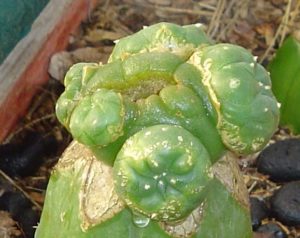 Out of all of the regions in the world, Mexico provides the most abundant diversity of hallucinogens, both in use and native availability (within the confines of current research, historical experiences and folklore). Although much hallucinogenic use exists in abnormal societies within Mexico, it is without a doubt a culture present in modern times as well. Despite the fact that there are many different cacti in Mexico possessing hallucinogenic compounds, there is one which reigns the most supreme and is considered the most sacred. The Peyote cactus is that hallucinogen and possesses the most religious significance. A close comparison in sacred value is the Teonanacatl mushroom to the Aztecs. The Aztecs recognized the Teonanacatl mushroom family for their intense hallucinogenic and vision-inducing properties. There are dozens of species of Teonanacatl with hallucinogen principles. The Aztecs also placed great spiritual significance on Ololiuqui, or the seeds of the Morning Glory plant. Morning Glory seeds are still employed in southern Mexico today.
Out of all of the regions in the world, Mexico provides the most abundant diversity of hallucinogens, both in use and native availability (within the confines of current research, historical experiences and folklore). Although much hallucinogenic use exists in abnormal societies within Mexico, it is without a doubt a culture present in modern times as well. Despite the fact that there are many different cacti in Mexico possessing hallucinogenic compounds, there is one which reigns the most supreme and is considered the most sacred. The Peyote cactus is that hallucinogen and possesses the most religious significance. A close comparison in sacred value is the Teonanacatl mushroom to the Aztecs. The Aztecs recognized the Teonanacatl mushroom family for their intense hallucinogenic and vision-inducing properties. There are dozens of species of Teonanacatl with hallucinogen principles. The Aztecs also placed great spiritual significance on Ololiuqui, or the seeds of the Morning Glory plant. Morning Glory seeds are still employed in southern Mexico today.
Next to Mexico, South America harbors the second most hallucinogens in terms of variety and quantity. Hallucinogens are also in widespread commonplace use in abnormal South American societies, especially in religious ceremonies. One of the most spiritually important and recreationally employed hallucinogen found throughout South America is the Ayahuasca. Ayahuasca, also known as Iowaska, Natema, Pinde or Yage, is an entheogenic brew created from the Banisteriopsis caapi vine. It is usually mixed other plants which contain DMT, or the full effects cannot be metabolized. Brugmansias (sometimes called Angel’s Trumpets), were commonly used by the Andean cultures and all throughout South America for their narcotic properties, producing scopolamine, hyoscyamine, and atropine. In fact, the Andean culture implemented at least 6 species of the Brugmansias. Over in Peru and Bolivia, a cactus known as the San Pedro (or Aguacolla) is used to create a vision-inducing, hallucinogenic drink called Cimora. Cimora is used in similar fashion to Ayahuasca. In Chile, witch doctors and shaman use the Nightshade Latue to induce hallucinogenic visions. A variety of snuffs and hallucinogens are created from plants in the Amazon (e.g. Yopo, Niopo). One example is Cebil (sometimes called Villca), a snuff created from the seeds of a plant very similar to the Yopo, which is popular in Argentina. Even a certain type of Petunia is used as an intoxicant in Ecuador.
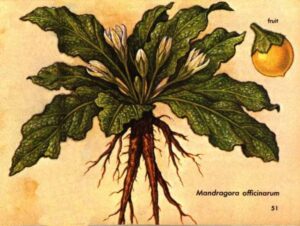 As profound as the use of hallucinogens and euphorics in the old world and within ancient civilizations, the New World has highlighted the largest cultural significance of hallucinogenic species. As far as actual use goes, more than 150 species have been known to be used in the Western Hemisphere. The Eastern Hemisphere boasts a little over 50 species. It does not mean that there are truly more or less hallucinogens in one hemisphere over another, but only that culture and societies in the Western Hemisphere have been more willing to encourage the use of hallucinogens for religion and recreation while the Eastern Hemisphere considered hallucinogens as properties of pure witchcraft.
As profound as the use of hallucinogens and euphorics in the old world and within ancient civilizations, the New World has highlighted the largest cultural significance of hallucinogenic species. As far as actual use goes, more than 150 species have been known to be used in the Western Hemisphere. The Eastern Hemisphere boasts a little over 50 species. It does not mean that there are truly more or less hallucinogens in one hemisphere over another, but only that culture and societies in the Western Hemisphere have been more willing to encourage the use of hallucinogens for religion and recreation while the Eastern Hemisphere considered hallucinogens as properties of pure witchcraft.
Unfortunately not all hallucinations were expected or enjoyed. There are many instances throughout history where hallucinations were used as either a weapon, or induced by accident. For example, there are many instances in ancient and even more modern Europe where Ergot (a parasitic fungus that feeds on rye) would accidently contaminate a flour mill, causing an entire town to get sick. Ergot is a hallucinogen and creates visions, delusions, paranoia, insanity, gangrene and even death. Other instances of mass accidental poisoning of hallucinogenic plants exist as well, including a well-documented instance in the new settlement of Jamestown, Virginia, in which an entire colony consumed and were deathly sick from Jimsonweed (aka Jamestown weed, and Thorn Apple). Thorn Apple is Datura stramonium.
Master Shaman Tip: It is important to note that a lot of poor experiences (or lack of experiences) when dabbling in well-known hallucinogens can be traced to having too weak of a substance, the wrong substance, or having improperly administered the substance.
